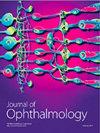通过腺相关病毒持续有效地输送抗血管内皮生长因子以治疗角膜新生血管:临床转化展望》。
IF 1.8
4区 医学
Q3 OPHTHALMOLOGY
引用次数: 0
摘要
角膜疾病占所有眼部缺陷的 5.1%,是全球第四大致盲原因。各种慢性刺激或缺氧情况都可能导致角膜新生血管,破坏健康角膜的免疫状态,增加角膜移植术后发生排斥反应的风险,并导致角膜混浊。在过去的几十年里,视网膜和脉络膜新生血管疾病的治疗取得了重大进展,大量药物实现了商业化。此外,为了克服抗血管内皮生长因子(VEGF)传统制剂疗程短、渗透力不足的障碍,包括腺相关病毒(AAV)介导的转移在内的多种新型给药系统已经完成了从实验室到临床的全过程。与视网膜新生血管疾病一样,角膜新生血管也存在慢性化和复发风险高的问题,因此需要持续高效地通过上皮屏障将药物输送到角膜基质深层。在已探索的方法中,腺相关病毒介导的抗血管内皮生长因子递送治疗角膜新生血管是研究最广泛、最有希望实现临床转化的策略,但目前仍主要停留在临床前阶段。这篇综述全面探讨了在角膜血管形成中应用 AAV 载体输送抗血管内皮生长因子药物的必要性、益处和风险,包括其目前的进展和临床转化中的挑战。本文章由计算机程序翻译,如有差异,请以英文原文为准。
Sustained and Efficient Delivery of Antivascular Endothelial Growth Factor by the Adeno-associated Virus for the Treatment of Corneal Neovascularization: An Outlook for Its Clinical Translation.
Corneal diseases represent 5.1% of all eye defects and are the fourth leading cause of blindness globally. Corneal neovascularization can arise from all conditions of chronic irritation or hypoxia, which disrupts the immune-privileged state of the healthy cornea, increases the risk of rejection after keratoplasty, and leads to opacity. In the past decades, significant progress has been made for neovascular diseases of the retina and choroid, with plenty of drugs getting commercialized. In addition, to overcome the barriers of the short duration and inadequate penetration of conventional formulations of antivascular endothelial growth factor (VEGF), multiple novel drug delivery systems, including adeno-associated virus (AAV)-mediated transfer have gone through the full process of bench-to-bedside translation. Like retina neovascular diseases, corneal neovascularization also suffers from chronicity and a high risk of recurrence, necessitating sustained and efficient delivery across the epithelial barrier to reach deep layers of the corneal stroma. Among the explored methods, adeno-associated virus-mediated delivery of anti-VEGF to treat corneal neovascularization is the most extensively researched and most promising strategy for clinical translation although currently although, it remains predominantly at the preclinical stage. This review comprehensively examines the necessity, benefits, and risks of applying AAV vectors for anti-VEGF drug delivery in corneal vascularization, including its current progress and challenges in clinical translation.
求助全文
通过发布文献求助,成功后即可免费获取论文全文。
去求助
来源期刊

Journal of Ophthalmology
MEDICINE, RESEARCH & EXPERIMENTAL-OPHTHALMOLOGY
CiteScore
4.30
自引率
5.30%
发文量
194
审稿时长
6-12 weeks
期刊介绍:
Journal of Ophthalmology is a peer-reviewed, Open Access journal that publishes original research articles, review articles, and clinical studies related to the anatomy, physiology and diseases of the eye. Submissions should focus on new diagnostic and surgical techniques, instrument and therapy updates, as well as clinical trials and research findings.
 求助内容:
求助内容: 应助结果提醒方式:
应助结果提醒方式:


